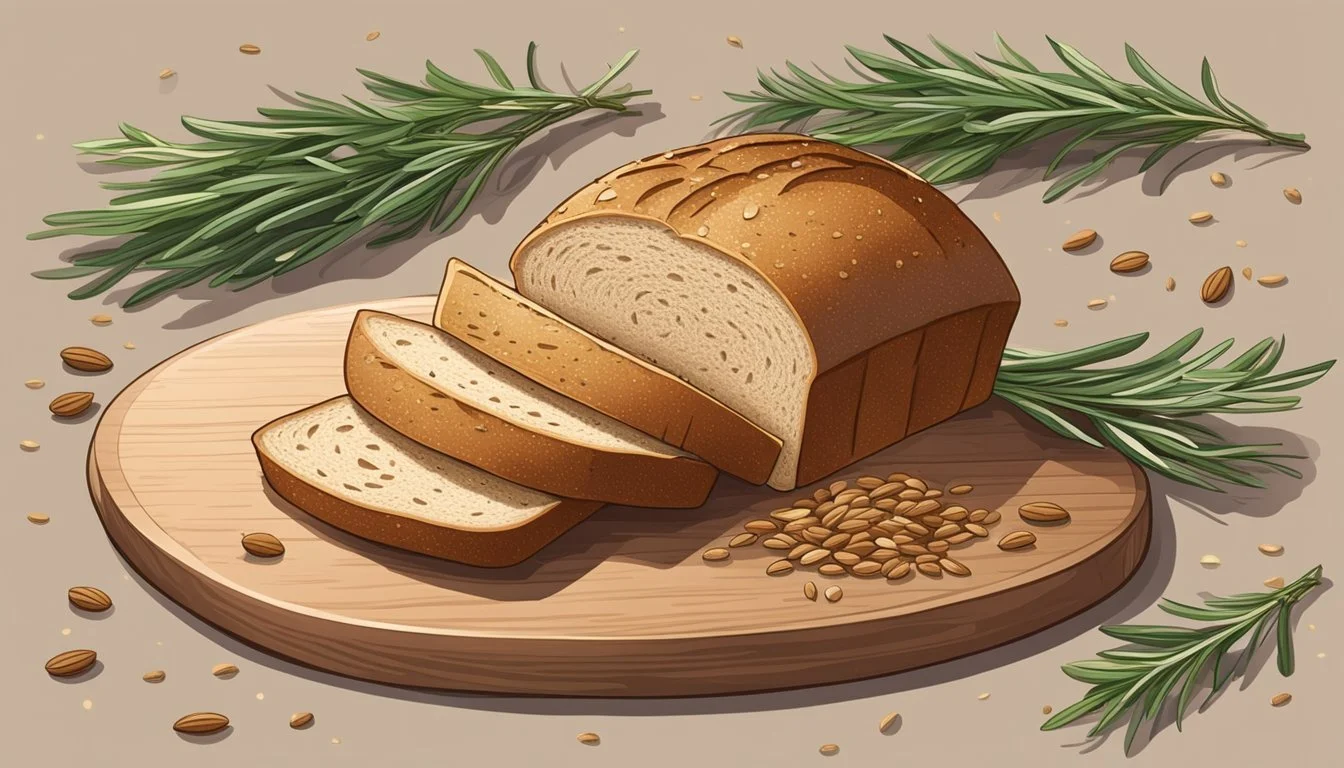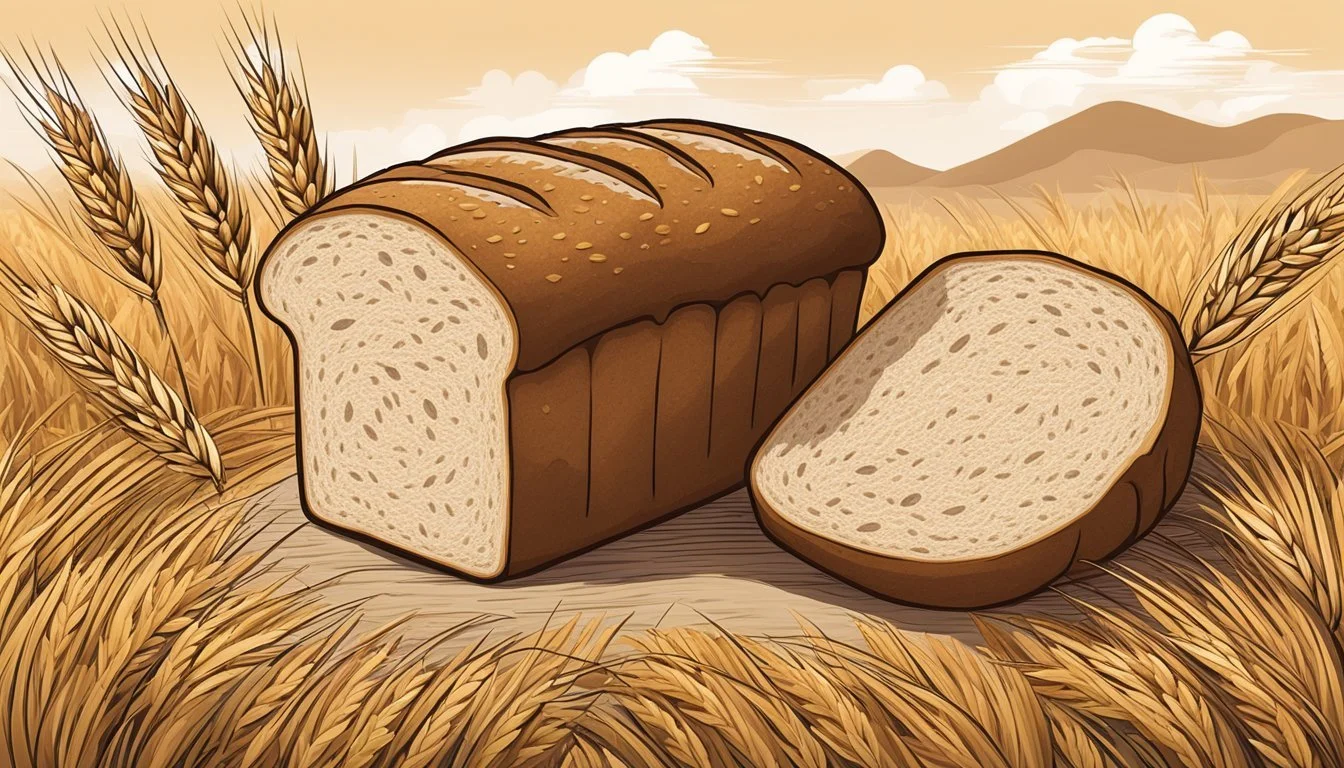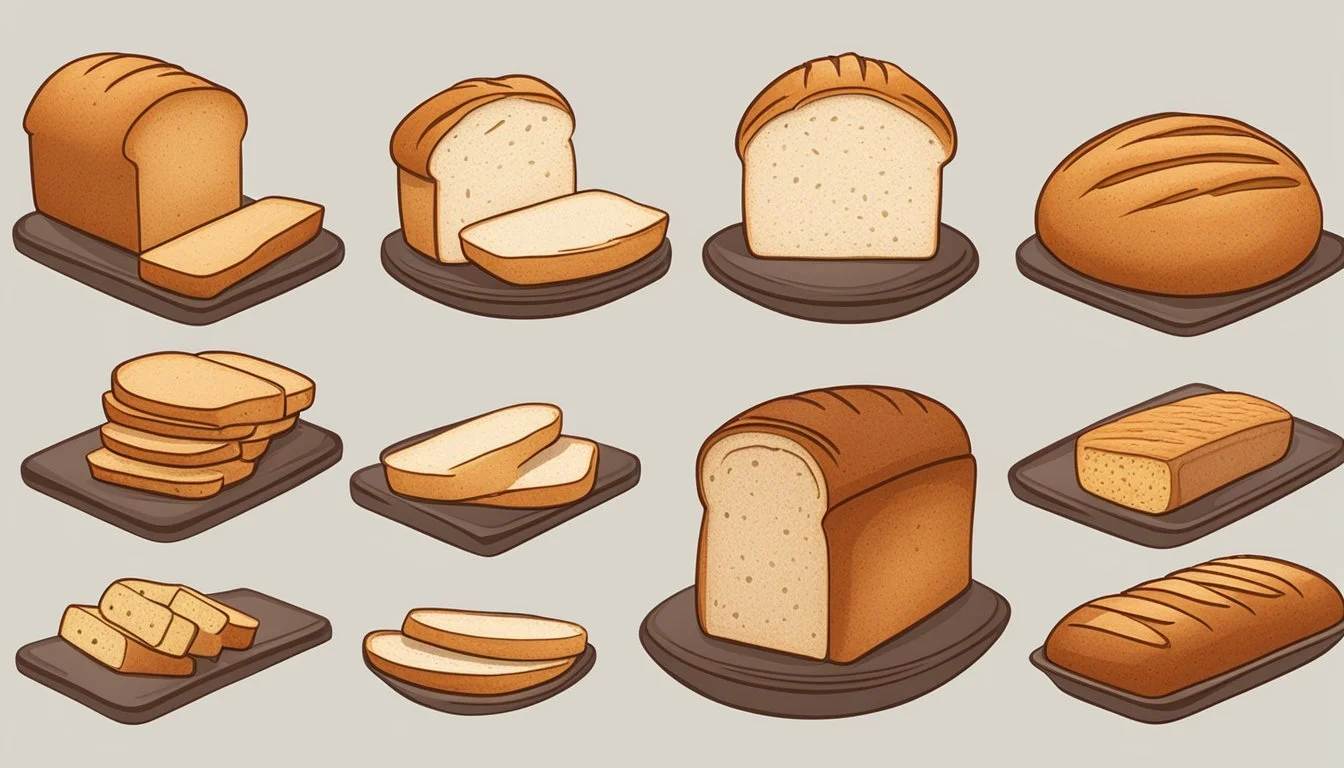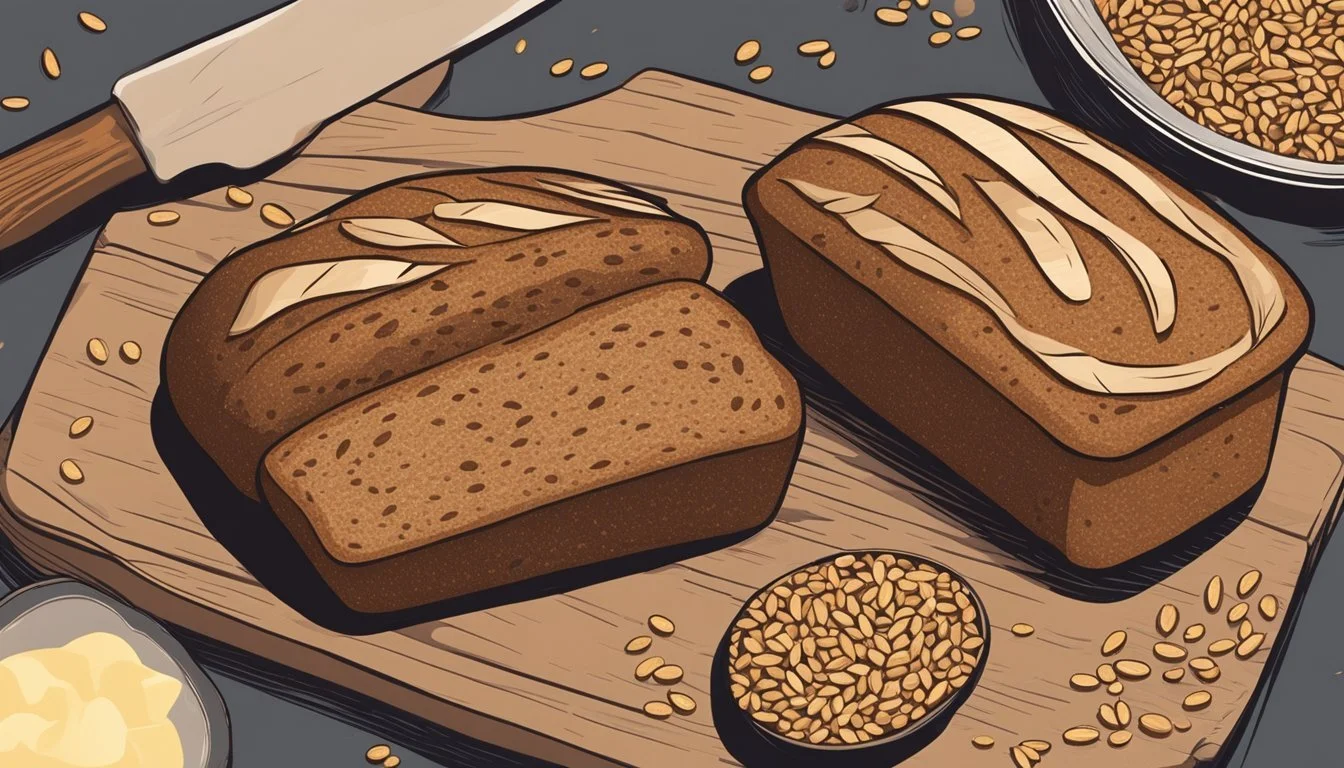Is Rye Bread Gluten-Free?
Unveiling the Truth About Rye and Gluten
Rye bread typically conjures images of dense, dark loaves with a distinct, robust flavor. Central to its composition is rye flour, which differentiates it from its wheat bread counterparts. The question of whether rye bread is gluten-free is a pertinent one, especially for individuals with celiac disease or gluten sensitivity. It is essential to note that rye contains a type of gluten protein known as secalin, which can trigger adverse reactions in people with celiac disease, making traditional rye bread unsuitable for a gluten-free diet.
However, there is a growing availability of gluten-free bread options, including those that mimic the taste and texture of rye bread. These are often made with a blend of gluten-free grains and do not contain rye flour. For those who appreciate the distinctive taste of rye but must adhere to a gluten-free diet, these specialized recipes allow for a safer inclusion of rye-like bread in their meals. Such alternatives provide the benefits of a whole grain, such as fiber, without the presence of gluten.
Understanding Gluten
This section provides a detailed overview of gluten's nature, its function in breadmaking, and its impact on certain health conditions.
What Is Gluten?
Gluten is a protein composite found in grains such as wheat, rye, and barley. It is composed primarily of two proteins: glutenin and gliadin. When water is mixed with flour, glutenin and gliadin interact, forming a sticky network known as gluten, which gives elasticity and strength to dough.
Gluten's Role in Bread
In breadmaking, gluten is essential for the texture and structure of the final product. It acts as a binding agent, trapping air bubbles and allowing bread to rise. The elasticity of gluten provides bread with its chewy texture, which is desirable in many types of bread, including traditional rye bread.
Gluten-Related Health Conditions
Individuals with certain health conditions, such as celiac disease, gluten sensitivity, or gluten intolerance, must avoid gluten due to negative reactions.
Celiac disease: An autoimmune disorder where the ingestion of gluten leads to damage in the small intestine.
Gluten sensitivity/intolerance: Non-celiac reaction to gluten that causes symptoms similar but is not the same as celiac disease.
For these individuals, consuming foods containing gluten can result in symptoms ranging from digestive issues to more serious health risks. It's also important to be aware that gluten is considered an allergen for some people, and proper labeling on food products is crucial for their safety.
Rye Bread Essentials
In exploring whether rye bread is gluten-free, it's important to understand the foundation of what makes rye bread unique, the nature of rye grain, and the traditional ingredients used in its making.
The Basics of Rye Bread
Rye bread is distinctly known for its rich flavor, often enhanced by the addition of caraway seeds. The flavor of rye bread is typically robust, with a slightly sour character, which sets it apart from other bread types.
Rye Grain and Flour
Rye: A cereal grain, closely related to wheat and barley, but with a lower gluten content.
Flour: Rye flour comes in different forms such as whole grain (pumpernickel) and white rye flour derived from the inner, endosperm part of the rye kernel.
Gluten Content: Although rye contains a gluten protein called secalin, it is different from the gluten in wheat; secalin is also a trigger for individuals with celiac disease.
Traditional Ingredients in Rye Bread
Grain: Traditional rye bread includes rye as a primary ingredient.
Flavor Enhancers: Caraway seeds are commonly used to add depth to rye bread's distinct flavor.
Closely-Related Grains: Wheat flour is occasionally blended with rye flour in traditional recipes, impacting gluten content.
Binding Agents: Historically, sourdough starters or commercial yeast are used to leaven rye bread, contributing to its structure and taste.
Gluten-Free Diet and Bread Choices
When adopting a gluten-free diet due to conditions like celiac disease or gluten intolerance, it's essential to understand the options for gluten-free bread, including alternatives like gluten-free rye bread.
Defining a Gluten-Free Diet
A gluten-free diet excludes all forms of gluten—a protein found in wheat, barley, and rye—making it essential for individuals with celiac disease or non-celiac gluten sensitivity. They must avoid traditional bread made with these grains. Gluten-free bread is crafted using alternative grains and flours that do not contain gluten, providing safe options for those on this diet.
Why Choose Gluten-Free Bread?
Individuals choose gluten-free bread to manage symptoms of gluten-related disorders and maintain their health. Regular rye bread contains gluten, but gluten-free rye bread uses substitutes like rice or oat flour mixed with binders to mimic the texture and flavor of traditional rye. For those seeking the taste of rye without the gluten, selecting or creating a gluten-free rye bread is a viable alternative.
Making Gluten-Free Rye Bread
In creating a gluten-free rye bread, selecting the appropriate flour substitute and leveraging specific techniques are fundamental. This section provides detailed insights into choosing gluten-free flour alternatives, discovering suitable rye bread recipes, and baking with precision.
Gluten-Free Flour Alternatives
When it comes to baking gluten-free rye bread, traditional rye flour is replaced with gluten-free options such as sorghum flour and brown rice flour. These flours closely mimic the texture and flavor of conventional rye. Additionally, binding agents like psyllium husk and xanthan gum are essential to provide the structural integrity that gluten typically offers.
Sorghum Flour: Resembles the taste and texture of rye, works well in blends.
Brown Rice Flour: Provides mild flavor, suitable for bread recipes.
Psyllium Husk: Acts as a binder, aids in dough elasticity.
Xanthan Gum: Enhances viscosity, retains moisture in the bread.
Gluten-Free Rye Bread Recipes
The backbone of any gluten-free rye bread is a well-crafted recipe that contemplates the absence of gluten. Recipes typically call for a combination of gluten-free flours, a leavening agent like yeast, and a sweet component such as sugar or molasses to feed the yeast. Here are critical steps mentioned in gluten-free rye bread recipes:
Yeast Activation: Combine yeast with warm water and sugar, allowing it to bloom.
Dry & Wet Ingredients: Mix gluten-free flours with binders and then incorporate the activated yeast mixture.
Kneading: With gluten-free dough, kneading can be minimal or even unnecessary.
Baking Techniques and Tips
Baking gluten-free rye bread requires attention to temperature and humidity, among other factors. Here are a few techniques and tips:
Baking Stone or Dutch Oven: Utilize a preheated baking stone or Dutch oven to evenly distribute heat.
Correct Oven Temperature: Preheat the oven to the right temperature—usually between 350°F to 375°F—before baking the bread.
Dough Handling: Handle the gluten-free dough gently, as it's more delicate than gluten-containing doughs.
Proofing: Allow the dough to rise in a warm, draft-free environment until it doubles in size.
Armed with these principles, bakers can confidently produce delectable and wholesome gluten-free rye bread.
Health and Nutritional Aspects
When discussing the health and nutritional aspects of rye bread, it is key to consider its fiber content, calorie count, and allergen potential. Each of these elements plays a vital role in the overall nutritional value of rye bread.
Fiber Content in Rye Bread
Rye bread is a good source of dietary fiber, especially when it's made from whole-grain rye flour. The fiber content promotes digestive health and can vary depending on the type of rye bread. A typical 32-gram slice of rye bread houses approximately 1.9 grams of fiber, while 100 grams of rye bread generally contains about 5.8 grams of fiber.
Calorie Consideration
Compared to other types of bread, rye bread typically offers a lower calorie count. On average, a slice of rye bread contains about 73 calories, which is more favorable for those monitoring their caloric intake as part of a balanced diet.
Potential Allergens in Rye
Rye contains gluten, a protein that is a common allergen, making rye bread unsuitable for individuals with celiac disease or gluten sensitivity. Despite its nutritional benefits for others, those with gluten-related disorders must avoid rye bread and opt for alternatives made with gluten-free grains.
Consumer Guide
Navigating the world of gluten-free alternatives can be challenging. This guide is crafted to assist consumers in identifying, purchasing, and preserving gluten-free rye bread, ensuring a safe and enjoyable experience for those with gluten sensitivities.
Where to Find Gluten-Free Rye Bread
Gluten-free rye bread is available at various outlets, but one must exercise caution to choose genuinely gluten-free options. Specialty grocery stores and health food stores often carry gluten-free products. Consumers can also look online for retailers that specialize in gluten-free goods. Some bakeries might offer gluten-free rye bread, but it is important to confirm the bread’s gluten-free status before purchase.
Grocery stores: Look in the gluten-free section or ask the store manager.
Online retailers: Search for 'gluten-free rye bread' on websites dedicated to gluten-free products.
Labeling and Certifications
Understanding labels is crucial when purchasing gluten-free rye bread. The term "rye bread" can be misleading because traditional rye bread contains gluten. Consumers should look for bread labeled as "gluten-free rye bread" and confirm the ingredients list does not contain wheat, barley, or traditional rye, all of which contain gluten. Furthermore, certifications from reputable organizations such as the Gluten Intolerance Group's Gluten-Free Certification Organization (GFCO) add an extra layer of assurance.
Look for labels stating "gluten-free"
Inspect for certified gluten-free logos from organizations like the GFCO
Storing and Freezing Tips
Proper storage is essential to maintain the freshness and extend the shelf life of gluten-free rye bread. Gluten-free breads often have a shorter shelf life, making it imperative to store them correctly. For short-term storage, keeping bread in a cool, dry place or in the refrigerator can help preserve its texture and prevent mold. For long-term storage, freezing is an excellent option. Slice the bread before freezing to conveniently thaw individual portions as needed.
Refrigerator: Store in a sealed bag for short-term freshness (a few days to a week).
Freeze: Wrap slices individually or place parchment paper between them and freeze for up to 3 months.
By following these tips in this consumer guide, individuals seeking gluten-free options can confidently select and enjoy gluten-free rye bread without compromising on safety or quality.
Questions and Considerations
When exploring the landscape of rye bread in a gluten-free context, consumers often grapple with questions surrounding rye flavor authenticity and ingredient substitutions. They must weigh the differences in taste and texture between traditional and gluten-free variants.
Commonly Asked Questions
Is rye bread gluten-free? Traditional rye bread contains gluten, as rye is a gluten-containing grain. However, bread labeled as gluten-free rye typically substitutes rye flour with gluten-free alternatives.
Does gluten-free rye bread taste like regular rye bread? Gluten-free rye bread may endeavor to mimic the distinctive taste of rye using a blend of alternative flours and flavor additives, but the taste and texture might differ from that of traditional rye bread.
What gluten-free flours are used to replace rye? Manufacturers may use a mix of gluten-free flours such as sorghum, oat (certified gluten-free), quinoa, and rice flours.
Can I find the rye flavor in gluten-free bread? The characteristic rye flavor can be challenging to achieve without rye grain but may be approximated in gluten-free options through the use of caraway seeds and other flavorings.
Gluten-Free Versus Traditional Rye Bread
The distinction between gluten-free rye bread and its traditional counterpart lies not only in the absence of gluten in the former but also in the experience it offers.
Taste and Texture Comparisons
Traditional rye bread is known for its unique taste and dense texture, both resulting from the presence of gluten in rye flour.
Gluten-free rye bread often requires additional ingredients like xanthan gum to emulate the desirable qualities of gluten, such as elasticity and chewiness.
Ingredient Considerations
When selecting or preparing gluten-free rye bread, it is crucial to ensure that no gluten-containing ingredients are used, as even trace amounts can be harmful to individuals with celiac disease or gluten sensitivity.
Authentic rye flavor may be mimicked in gluten-free bread through careful formulation and the addition of specific ingredients, although it's important to manage expectations about the exact replication of traditional rye bread's sensory attributes.
Beyond the Loaf
When considering gluten-free rye, it's important to look beyond traditional bread. Sandwiches like the classic Reuben may require a gluten-free touch, and even pumpernickel variants must be crafted without gluten. In the realm of alcoholic beverages, the presence of gluten depends on the specific processes involved, such as distillation.
Gluten-Free Rye in Other Foods
Gluten-free rye alternatives expand into several food categories, notably in sandwiches and specialty breads.
Sandwiches: A Reuben sandwich, typically made with rye bread, can be adapted using gluten-free rye to cater to those with celiac disease or gluten intolerance.
Pumpernickel Bread: Authentic pumpernickel bread also has a place in gluten-free diets when made from gluten-free grains.
It's essential for consumers to verify ingredients since gluten-free versions of these foods are not always readily available in mainstream markets. Manufacturers substitute rye with gluten-free grains and binders to mimic the distinct flavor and texture of rye.
Rye and Alcoholic Beverages
The transition of rye into the realm of alcoholic beverages showcases a separation from gluten through the distillation process.
Beer: Typically, most beers are not gluten-free due to the presence of barley and wheat. However, gluten-removed or gluten-free beers are available, but their suitability for those with celiac disease is a matter of debate.
Rye Whiskey: Despite being made from rye grains, the gluten protein is generally removed during distillation, rendering rye whiskey gluten-free. It's crucial to note, however, that cross-contamination can occur unless facilities exclusively process gluten-free products.
Consumers should always consult manufacturers and check labels to ensure the absence of gluten, especially when the risk of cross-contamination might be present.







